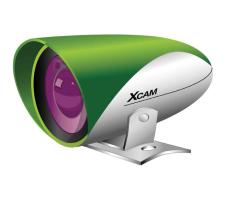
Iteris's Versicam is a price-sensitive product designed for applications where only one or two detection zones are required
The continuing, favourable performance-versus-cost situation concerning detection and monitoring technologies is driving the proliferation of intelligence across road networks
The effective and safe management of intersections is a focus for network operators and systems manufacturers alike. The most complicated of road environments, and statistically among the least safe, intersections enjoy particular emphasis in longer-term work on cooperative infrastructure solutions. However there are current developments in policy, such as the increasing interest in the environment and emissions reductions as well as the safety of more vulnerable road users, such as pedestrians and cyclists, which are shaping product development nearer to.Technological development continues to have a positive, downward pressure on monitoring solutions' price points which is allowing application at locations where cost would previously have been prohibitive. The net effect is an altogether more 'intelligent' road network from which operatives can derive greater levels of data and from more and more geographic locations.
Historically, video has tended to do well at major intersections which typically require anything between six and 10 loops.
CMOS developments
Inevitably, the greatest environmental benefits are going to be derived from vehicle powertrain developments and the smoothing of traffic flows. This does not prevent the monitoring systems themselves from becoming more environmentally conscious.Video camera technology is taking advantage of the developments in CMOS integrated circuits of the type used in mobile phones. These make possible significant material content reductions and also much-reduced power needs - a CMOS-based system draws only around 1W, as compared to the 30W for a more conventional CCD camera and associated image processing detector board.
"In Traficon's case, the evolution of video detection technology, in combination with CMOS sensor technology, towards the realisation of truly intelligent cameras is progressing at a very high rate," says the company's Jo Versavel. "This opens up significant new opportunities in terms of visual verification, remote control and internet- based communication. Moore's Law applies every bit as much to cameras as it does to chip development and we're seeing a doubling in camera capability every 18 months. The same can be said of interpretive capabilities; image compression standards are also developing at a swift pace. Go back 10 years and the state of the art could cope with just a few hundred pixels. Now we look to interpret the whole image - and that's against a background of ever-improving cameras with much higher resolutions, better night sensitivity, less blooming, no more smear and colour capabilities. High-resolution colour will become the norm in this sector."
"We'll be adding two products based on the same hardware but pitched at two different price points," he says. "The first is a more price-sensitive offering which targets stimulus package funding and will allow the replacement of just one or two loops at minor junctions. The second is more sophisticated and will include much more advanced image processing capabilities. These will include gridlock management and queue length measurement."
Vulnerable road users
Hitherto, most intersections have tended to cater for vulnerable road users within the green time allocated in signal phasing. Now, there is a thrust to take pedestrians, bicycles and the like into account more fully.Versavel perceives of a two-fold goal: to better inform drivers about pedestrians looking to cross the street - that is, mid-block detection - and to make sure that each pedestrian safely crosses the street. The latter might include extending the light phases to allow more time for the elderly or infirm.
This will probably lead to modifications in intersection geometries but there also remain significant technical challenges when it comes to identifying non-vehicular intersection users.
Although research goes on, both within commercial organisations and in cooperative projects such as the European Commission-funded TRACKSS, image-processing systems capable of dealing adequately with pedestrians and two-wheelers are still at least a couple of years away, according to Toffin.
Other technological drivers
As well as policy shifts, customer requests are also driving innovation. Ken Shain of"Fail-safe detection with minimum recall options for signal controls is often requested and our Autoscope video systems automatically detect loss of contrast due to heavy snow, fog on the faceplate and failed camera irises. They provide fixed, minimum or constant recall as programmed according to customer requirements.
"Ease of use and set-up is also important, and both our video and radar systems incorporate Wizards which simplify setup and calibration and our Solo Terra video detection system, for instance, is incredibly easy to install with only three wires. This eliminates the need for coaxial cable and proper video connectors.
"Reliability and digital streaming video over Ethernet are also important customer requests." The
The system can be used in all traffic detection applications and offers the same performance levels as a well-installed and maintained inductive loop, says the company's Rif Haffar.
"Its versatility, ease of use, and low lifecycle cost make it attractive where vehicle detection would otherwise not be practical, such as mid-block or advance detection." Haffar sees the ability to more accurately measure travel times as having a significant effect on congestion and intersection management. The Sensys Arterial Travel Time System, he says, allows city transportation planners to utilise arterial travel time along with speed, occupancy and volume measures to reduce congestion.
"It is the first turnkey, integrated and maintainable solution which meets the stringent accuracy requirements for urban traffic data systems," he continues. "Almost all of the data currently being used for traveller information systems and 511 servers are based on average or estimated travel times. As the Sensys system does not smooth out the peaks and troughs it delivers the entire distribution of travel times.
"It's exactly the peaks and troughs which are of interest to drivers and in every case accurate, dependable, real-time performance measures are the key. Without this real-time data, it's virtually impossible for agencies and drivers to react to fluctuations in traffic due to incidents or events."
Standards
At present, the main drivers of standards tend to be commercial, according to Versavel: "There is always a commercial drive, so commercial applications always come first - the standard then follows. It's all about supply and demand. As an entrepreneur, one is always looking for solutions which one is almost certain or at least hopes there will be a market for. The nice part about this is that there is the potential to create products which you know will be accepted and even promoted by national and international bodies."Citilog's Toffin perceives no real, functional standards at present beyond the more generally applicable electric/electronic, however he feels that there is a need for functional standards which focus on global objectives, such as reductions in greenhouse gas emissions or maintaining traffic fluidity.
"Those," he says, "would open the way to the development of quite a number of innovative technologies. Managing stop-and-go traffic would a major step forward in this respect." Ultimately, in a cooperative intersection context that could well mean intervention and Toffin and Versavel can both see a situation where active driver assistance becomes common.
ISS's Shain feels that there are distinct trends emerging.
"Standards are progressing, albeit slowly, in the infrastructure environment, particularly concerning communications protocols and cabinets," he says. "However, there are no standards to guide the development of sensor technology. Thus manufacturers continue to push the state of the art and take advantage of technological advances in cameras, signal processing, electronics and communications technologies.
"Although the ultimate arbiter is typically the marketplace, this paradigm has been shaken in the current economic period for a variety of reasons. Hence it is quite likely that procurement guidelines may rise in importance and may become a third great force toward standardisation."
Haffar sees a shift towards funding being linked to more aggressive performance goals: "That would ensure that the public receives an appropriate return on investment in terms of safety, mobility, efficiency and environmental improvements. Agencies are starting to establish both short- and long-term performance goals to reduce traffic congestion and carbon emissions from vehicles. Performance-based funding requires reliable and accurate data from urban intersections."













